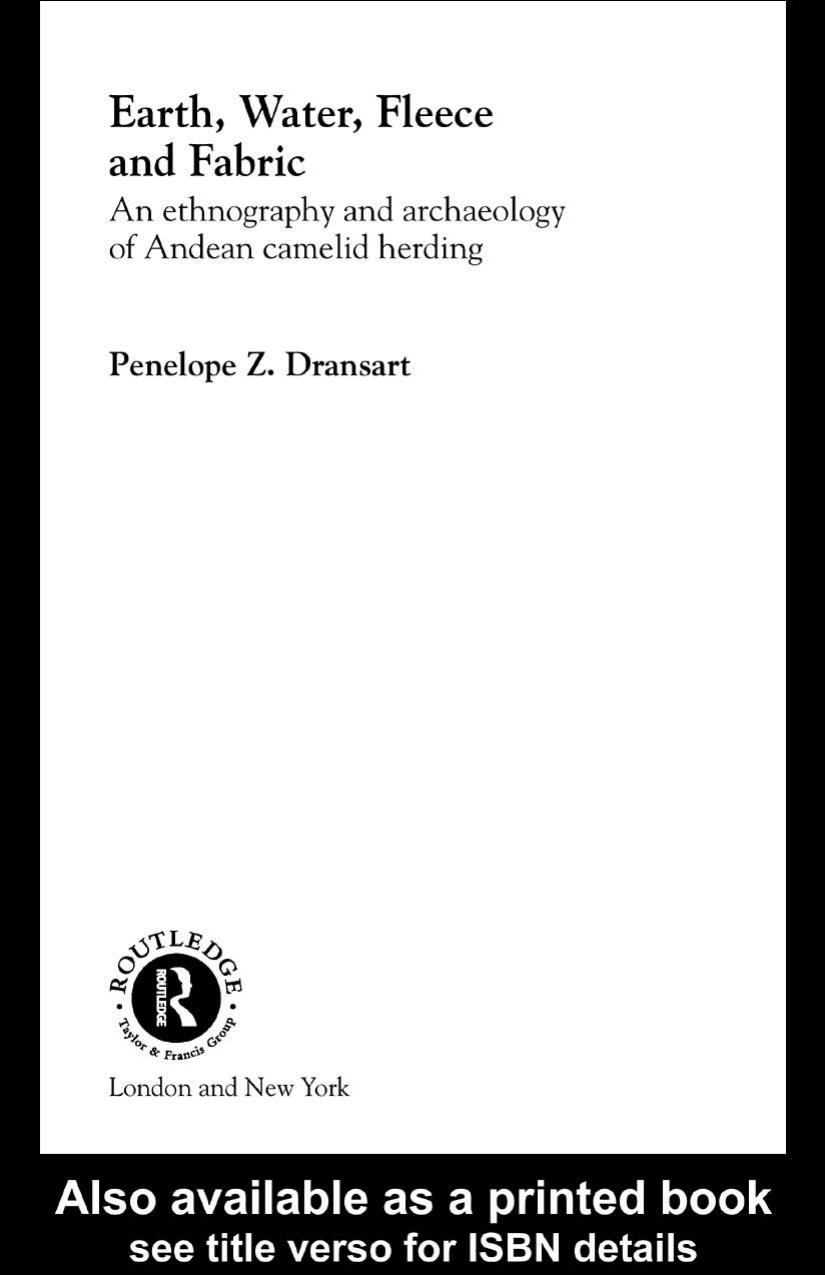

Most ebook files are in PDF format, so you can easily read them using various software such as Foxit Reader or directly on the Google Chrome browser.
Some ebook files are released by publishers in other formats such as .awz, .mobi, .epub, .fb2, etc. You may need to install specific software to read these formats on mobile/PC, such as Calibre.
Please read the tutorial at this link: https://ebookbell.com/faq
We offer FREE conversion to the popular formats you request; however, this may take some time. Therefore, right after payment, please email us, and we will try to provide the service as quickly as possible.
For some exceptional file formats or broken links (if any), please refrain from opening any disputes. Instead, email us first, and we will try to assist within a maximum of 6 hours.
EbookBell Team

4.1
90 reviewsEarth, Water, Fleece and Fabric
Through a richly detailed examination of the practices of spinning yarn from the fleece of llamas and alpacas, Earth, Water, Fleece and Fabric explores the relationships that herders of the present and of the past have maintained with their herd animals in the Andes. Dransart juxtaposes an ethnography of an Aymara herding community, based on more than ten years’ fieldwork in Isluga in the Chilean highlands, with archaeological material from excavations in the Atacama desert. Relevant historical evidence is adduced.
This work investigates the material culture of pastoral communities at the transition from a hunting and gathering way of life over three thousand years ago, its relationship with domestic processes, and how spinning and weaving in contemporary Isluga express the values of a herding way of life. These values are intimately related to the perceived importance of the landscape, with its resources of earth and water, in the transformation of pasture into fleece. Impeccably researched, this book is the first systematic study to set the material culture of pastoral communities against an understanding of the long-term effects of herding practices. It offers original insights into understanding gender relations among the herders, who establish the working relationships with their animals that enable them to produce yarns and fabrics, while also adopting a dynamic perspective on studying technical changes that have occurred in textile production in the Andes.
Penelope Z. Dransart is Chair of the Department of Archaeology at the University of Wales, Lampeter. Previous publications include Elemental Meanings: Symbolic Expressions in Inka Miniature Figures (1995) and Andean Art: Visual Expression and its Relation to Andean Beliefs and Values (1995).